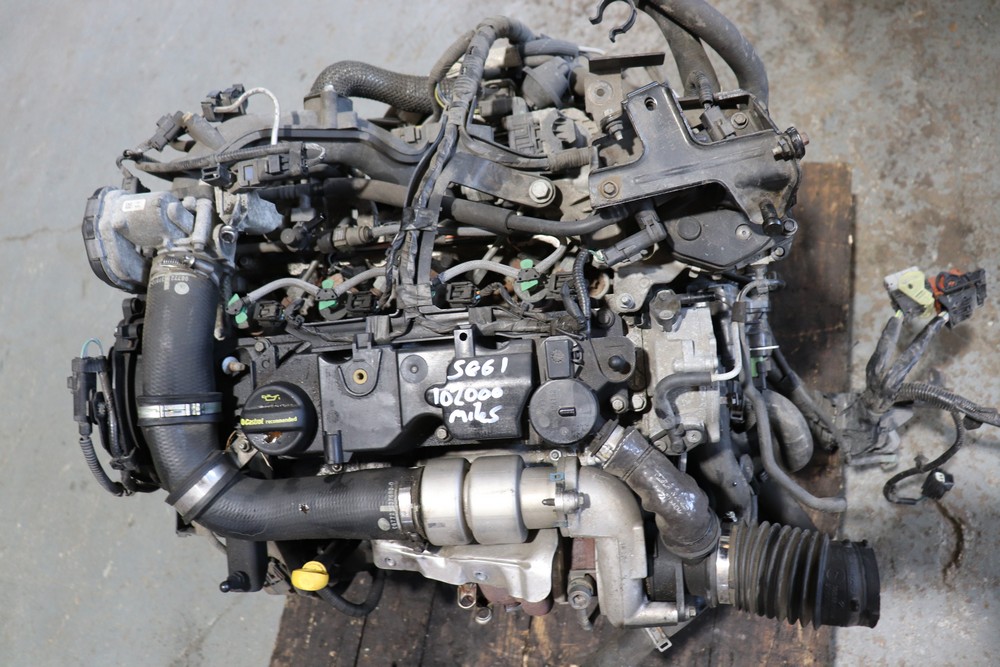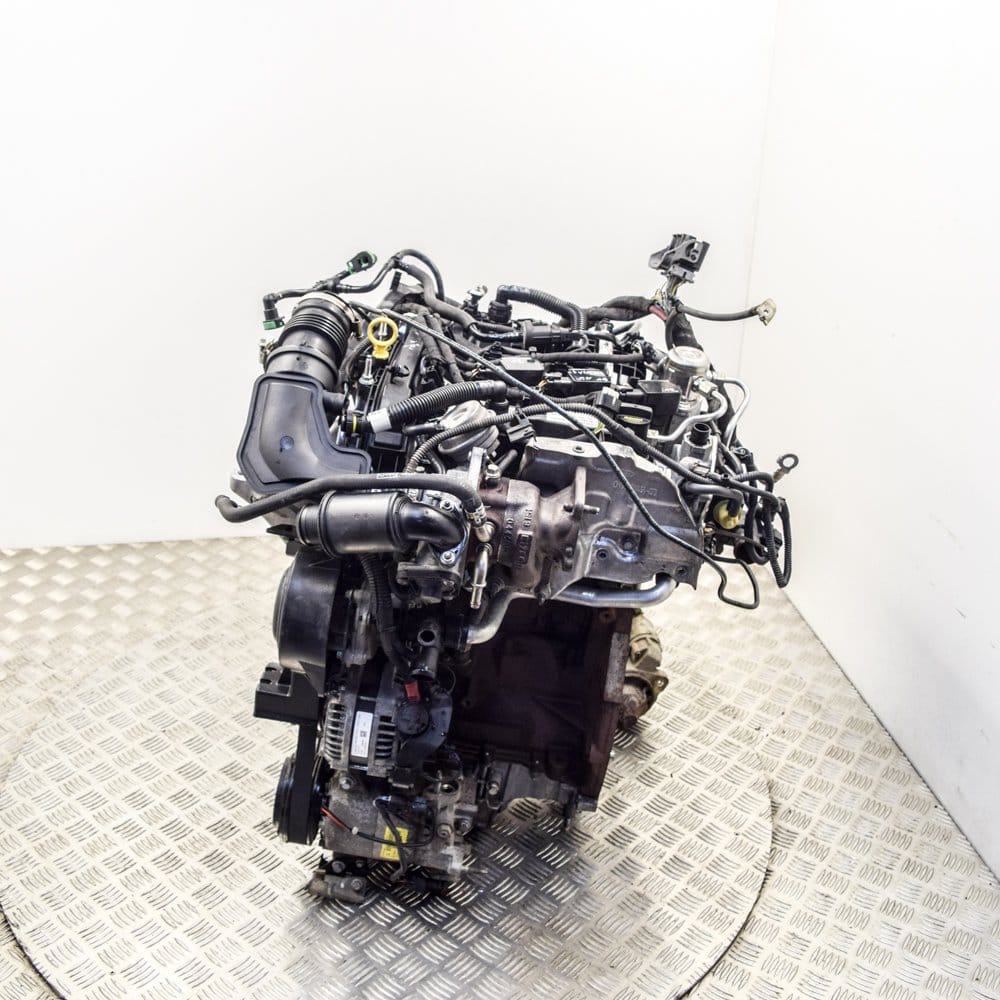Common Issues with the Ford Fiesta Engine and How to Fix Them
Common Issues with the Ford Fiesta Engine and How to Fix Them
Blog Article
The Future of Engines: Technologies Driving Sustainable Power Solutions
As the auto market navigates the necessary transition towards sustainability, the future of engines is increasingly specified by groundbreaking advancements. Electric engine developments, along with appealing developments in hydrogen gas cells and biofuels, are improving the landscape of power services. The emergence of crossbreed systems additionally complicates this development, presenting both chances and difficulties to decrease exhausts effectively. Coupled with the assimilation of expert system in engine design, these technological strides elevate important questions regarding their long-lasting practicality and influence on traditional paradigms. What might this imply for the market and customers alike?
Electric Engine Advancement
The development of electric engine advancements represents a crucial change in the aerospace and auto markets, driven by the urgent demand for lasting alternatives to fossil gas. This change is identified by substantial innovations in battery innovation, power electronic devices, and electrical motor layout, which jointly enhance the effectiveness and performance of electric engines.
Recent technologies have resulted in the development of lighter, much more energy-dense batteries, such as lithium-silicon and solid-state batteries, which assure longer varieties and much shorter billing times. Additionally, renovations in electric motor effectiveness, such as the use of permanent magnets and progressed cooling down systems, enable electrical engines to run successfully under varying conditions. These enhancements not only improve vehicle efficiency but additionally add to a decrease in overall power intake.
Furthermore, the combination of sophisticated software algorithms has actually enhanced power administration in electrical automobiles, permitting regenerative braking and anticipating charging techniques. As producers significantly accept electric propulsion, the vehicle and aerospace fields are observing a paradigm change towards greener innovations. This advancement not only meets governing demands however likewise aligns with consumer choices for eco-friendly transport options, strengthening electrical engines as a foundation of future sustainable movement.
Developments in Biofuels
As the vehicle and aerospace markets significantly focus on sustainable power resources, improvements in biofuels become a corresponding service to electric engines. Biofuels, stemmed from organic products such as crops, waste, and algae, offer an innovative avenue for lowering greenhouse gas exhausts and dependence on fossil gas.
Recent study has concentrated on improving the performance and sustainability of biofuel manufacturing. Second-generation biofuels make use of non-food feedstocks, reducing competitors with food supply and reducing ecological impact. Furthermore, advancements in synthetic biology have enabled the engineering of microorganisms to produce biofuels better, resulting in greater returns and reduced manufacturing costs.
Additionally, the development of drop-in biofuels enables for seamless integration into existing infrastructure, making it possible for a smoother shift for markets generally reliant on fossil fuels. ford fiesta engine. These fuels can be used in present engines without adjustments, promoting their fostering throughout various industries
Investments in biofuel technology, along with helpful policies, are vital to drive advancement and scalability. As the international area looks for to battle environment modification, biofuels supply a practical, immediate service that lines up with the overarching goal of sustainability in transportation and air travel.
Hydrogen Gas Cell Modern Technology
A growing number of scientists and companies are discovering hydrogen gas cell technology as a practical alternative to traditional power resources in transportation and energy systems. This modern technology converts chemical power from hydrogen into electrical power through an electrochemical response, with water as the only byproduct, making it an ecologically friendly alternative.
The core of hydrogen fuel cells is the fuel cell pile, where see page hydrogen molecules are divided right into protons and electrons. The circulation of electrons generates power, while protons move through a membrane layer to combine with oxygen from the air, developing water. This procedure leads to high efficiency and reduced discharges, placing hydrogen fuel cells as an important player in the shift to sustainable energy.
Considerable developments have been made in boosting the sturdiness and performance of fuel cells, alongside lowering costs via ingenious production methods. The growth of hydrogen production techniques, such as electrolysis powered by renewable energy sources, boosts the sustainability of the total system. As framework for hydrogen refueling expands and production approaches come to be a lot more effective, hydrogen gas cell modern technology holds terrific pledge for decarbonizing various fields, including durable transportation and stationary power generation.
Crossbreed Solutions and Their Influence
Crossbreed systems stand for a significant evolution in sustainable engine technology, merging conventional interior combustion engines with electric propulsion to maximize power performance and reduce emissions (ford fiesta engine). This twin technique allows lorries to make use of both power resources, allowing greater flexibility in energy intake and minimizing reliance on fossil fuels

In enhancement to environmental benefits, crossbreed systems supply customers a feasible shift in the direction of totally electric cars. They minimize range anxiousness by incorporating the convenience of gas with the benefits of electric propulsion, making them an attractive option for a bigger audience. As suppliers spend in hybrid modern technology, the development of advanced battery systems and light-weight materials informative post remains to enhance efficiency. Generally, crossbreed systems represent a pivotal step in the direction of achieving lasting transportation and resolving the urgent need for eco-friendly power options.
The Function of AI in Engine Design
Leveraging innovative formulas and equipment understanding strategies, the automobile market is increasingly integrating man-made knowledge (AI) right into engine design processes. AI improves the performance and effectiveness of style by analyzing huge datasets to determine optimum configurations and performance parameters. This ability enables engineers to replicate different operating problems and predict engine actions under multiple circumstances, considerably decreasing the time and cost related to typical prototyping techniques.
Additionally, AI assists in the development of innovative materials and burning processes tailored for sustainability. By maximizing fuel performance and minimizing emissions, AI-driven designs align with global initiatives targeted at reducing the carbon impact of automobile engines. Equipment learning algorithms can likewise anticipate upkeep requirements, resulting in improved reliability and long life of engine components.
In Addition, AI contributes in the integration of electrification technologies, such as crossbreed systems, where it can maximize battery monitoring and power recovery processes. As the sector moves in the direction of even more lasting power solutions, the function of AI in engine style becomes progressively crucial, driving innovation and enhancing the efficiency of future engines. Inevitably, the collaboration in between AI and engine style proclaims a brand-new period of smarter, cleaner, and extra reliable automobile innovations.

Conclusion
Finally, the future of engines is being shaped by a convergence of cutting-edge technologies that prioritize sustainability. Electric engine improvements, biofuel growths, hydrogen fuel cells, and hybrid systems collectively add to a significant decrease in discharges and environmental influence. Furthermore, the combination of synthetic intelligence in engine style improves performance and efficiency. These transformative remedies emphasize a commitment to producing a cleaner, more lasting vehicle landscape, eventually profiting both culture and the atmosphere.
Electric engine innovations, alongside promising developments in hydrogen fuel cells and biofuels, are improving the landscape of power solutions. Furthermore, renovations in electric motor performance, such as the usage of long-term magnets and progressed cooling systems, enable electrical engines to run efficiently under varying conditions. By enhancing fuel performance and lessening exhausts, AI-driven designs line up with global initiatives aimed at reducing the carbon impact of vehicle engines. As the market moves towards more sustainable power remedies, the function of AI in engine layout becomes progressively crucial, driving advancement and improving the performance of future engines. Electric engine innovations, biofuel advancements, hydrogen fuel cells, and hybrid systems jointly contribute to a significant reduction in emissions and ecological impact.
Report this page